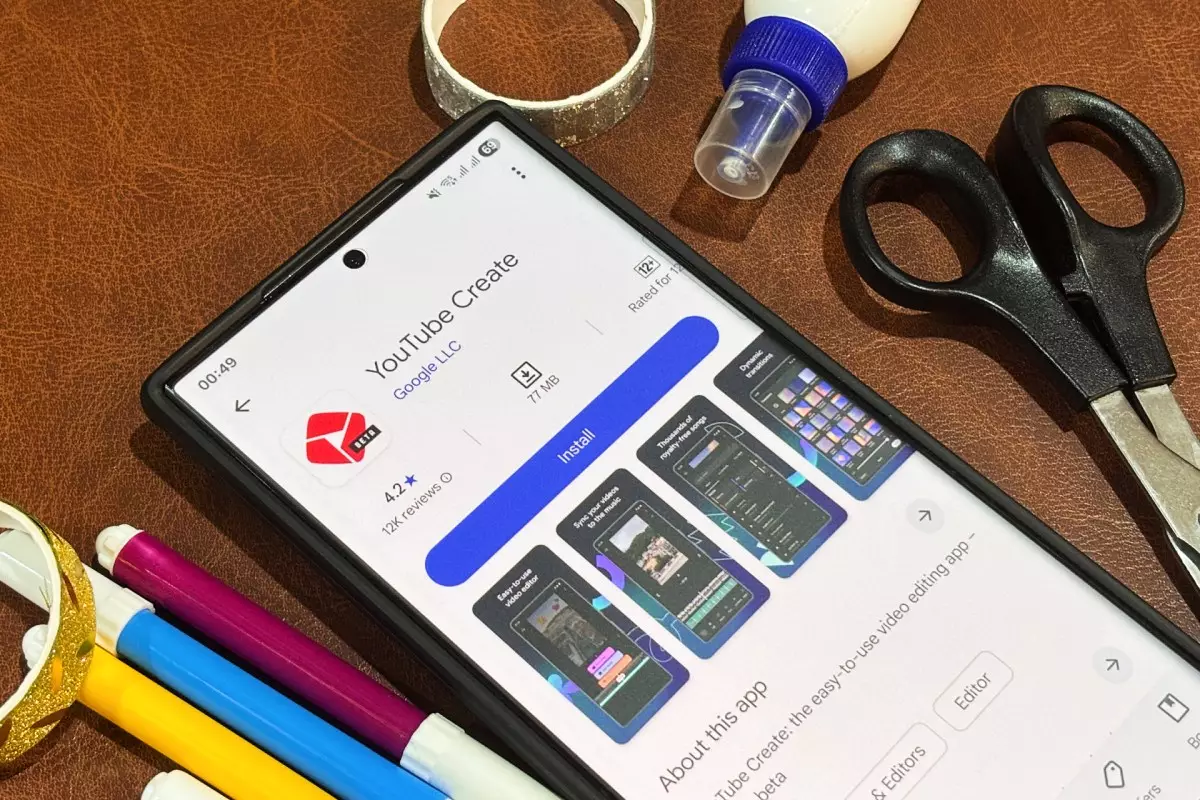Almost two years after its Android debut, Google is gearing up to introduce YouTube Create on iOS, signaling a bold attempt to capture a larger slice of the mobile video editing market. The move, revealed through job postings targeting iOS developers in Bengaluru, reflects Google’s intention to broaden YouTube Create’s reach beyond its original Android user base. This timing suggests Google recognizes that to stay relevant amid fierce competition, it must leverage iOS’s substantial user base. However, Google’s delayed rollout raises questions about its ability to capture fast-moving trends in the short-form video content space.
Navigating an Already Saturated Landscape
YouTube Create is not entering an open field; instead, it faces formidable incumbents like ByteDance’s CapCut and InShot, apps that have already cemented their dominance with tens of millions of users and downloads. CapCut’s staggering 66 million Android downloads in Q2, combined with its 442 million monthly active users on that platform, dwarfs YouTube Create’s modest 4 million total downloads since its launch and under one million monthly active users. Even InShot, a less hyped but well-established app, eclipses YouTube Create by cumulative downloads and engagement. This stark discrepancy highlights the uphill battle YouTube Create confronts.
The strong existing foothold of competitors is largely due to deeper ecosystem integrations; for instance, CapCut’s seamless connection with TikTok offers users a convenient, frictionless content creation experience, which YouTube Create lacks. Google’s offering must therefore not only match but ideally outpace the established user experience to change consumer habits that have already gravitated toward these entrenched platforms.
Signs of Loyalty Amidst Growth Struggles
Despite its underwhelming market penetration, YouTube Create exhibits promising signs of cultivating a dedicated user base. According to Sensor Tower data, it experienced a 28% year-over-year growth in monthly active users last quarter, a rate surpassing its competitors like CapCut and InShot. This might indicate a core community finding value in Google’s editing tools and returning consistently, a critical prerequisite for long-term sustainability in app markets where initial downloads rarely translate into active engagement.
However, this loyalty seems fragile. Retention rates for YouTube Create are strikingly low, with just about 1% of users remaining active 90 days post-download, compared to CapCut’s 7% and InShot’s 4%. Engagement duration and frequency also trail behind—YouTube Create users spend less time per month in the app and open it roughly half as often as CapCut users. These numbers suggest surface-level growth but a struggle to embed deeply into users’ creative workflows.
Expanding User Base Across Borders
Originally dominated by Indian users—who made up 67% of YouTube Create’s active audience last year—the app is diversifying its geographic footprint, with India’s share dropping to 51% recently. Indonesia now represents the second-largest market, and countries like Germany, Brazil, the UK, and others are showing robust annual growth rates. These bursts of regional adoption could be a sign Google’s localization and market awareness are improving, which is crucial given the global nature of mobile content creation.
This geographic diversification will be vital for YouTube Create’s iOS debut, as preferences and competitive dynamics differ wildly between regions. Apple’s iOS platform commands strong loyalty in Western markets and affluent Asian countries, areas where YouTube Create is still a minor player. Google’s challenge will be not just to replicate its Android approach but to tailor features and marketing that appeal to iOS users’ distinct expectations.
The Road Ahead: Can Google Disrupt the Status Quo?
Launching YouTube Create on iOS is undoubtedly a strategic necessity for Google if it hopes to compete meaningfully in video content creation for mobile. Yet, it will require more than just platform parity to erode CapCut’s and InShot’s dominance. Google must enhance product differentiation—perhaps by integrating more deeply with YouTube’s ecosystem or innovating unique editing tools that leverage AI or content discovery.
The competition’s stronghold is reinforced not just by user counts but by their positioning within broader social and content platforms. CapCut’s native connection to TikTok and Instagram’s own editing tools have made them default choices. YouTube Create, sitting on the sidelines of this creator ecosystem until now, risks remaining a niche tool unless it executes big on seamless usability and cross-platform benefits.
Even as Google’s app gains momentum, the video editing market remains intensely competitive and unforgiving. Success for YouTube Create will hinge on its ability to convert passive downloads into habitual use, foster creator loyalty, and ultimately, tap into the explosive growth of short-form video content in an increasingly multitasking mobile environment. The upcoming iOS release marks a critical inflection point—not merely an expansion, but a test of whether YouTube Create can transition from an also-ran to a compelling contender.

